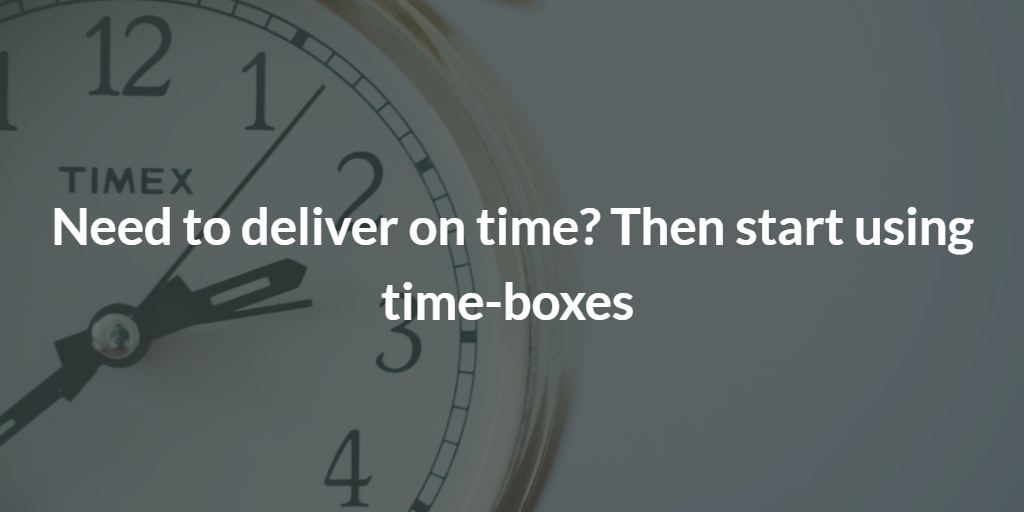On-time delivery is the El Dorado of project management. No one wants to be late for a key deadline. As the deadline approaches, and you’re running late, the project manager and the project teamwork work like crazy to stay on time.
Everyone works late and comes in on weekends. This generates stress, overload, even burnout.
There’s a better way to deliver on time. It’s called time-boxing.
What is a time-box?
A time-box has a fixed end date, which is fixed, but the work to be done is variable.
If you are running late, you have a clear, pre-approved way of doing less.
If you have less to do, you can probably get back on schedule.
Before the time-box starts, you need to list the work to be done, and then get agreement on how to prioritize it.
Here’s an example, for a simple project to tidy up and repaint a garage.
Without a time-box, you might list the needs in any order, perhaps in order of work:
- Sort content of boxes
- Recycle junk
- Install new lighting
- Buy new tools
- Paint floor
- Paint walls & ceiling
- Paint woodwork
Without a time-box, if you run short of time, you may have to rush the last painting tasks. If you want to do a good job, you’ll be painting until midnight, and completely stressed out…
By using a time-box, you can keep calm and avoid panic. You will focus on the essentials, and make sure that those essentials are delivered on time.
The trick is, before you start work, you should get the time-box agreed. You need to prioritise the list of needs.
Prioritised list
— Must have —
- Paint walls & ceiling
- Paint woodwork
- Recycle junk
— Should have —
- Paint floor
- Install new lighting
— Could have —
- Sort content of boxes
- Buy new tools
If we are a bit late, we will drop one or more items from the “could have” list. If we are seriously behind schedule, all the “could have” items and one or more “should have” items won’t get done. We will plan our work accordingly, with the “must-have” items early in the schedule and the “could have” items later.
The first time you use time-boxing, you might hit the problem that people can’t or won’t prioritise their needs. Your boss might say that everything is a top priority. Nothing is negotiable. That’s normally not true, especially if on-time delivery is important. You may need to “educate” your boss. You may need to help people think through the real priorities.
If you are using a method like PRINCE2, you can add time-boxing to your work. In PRINCE2 terms, a stage or a work-package could be a time-box. You commit to deliver on time (zero tolerance on time), but you have a lot of flexibility on what you deliver, using your prioritised list of needs (so you have high tolerance on scope).
Another choice for methods is to move to an Agile method such as Agile ATERN (with AgilePM certification), which is built around time-boxes and prioritised lists. This method uses the acronym MoSCoW for Must Have, Should Have, Could Have, Won’t Have to help you remember to prioritise.
So if you are always rushing to hit your deadlines, you have a better way forward. You have a way to avoid last-minute stress and panic. If need to deliver on time, then it’s time to start using time-boxes.
Article republished from Milestones by Jeff Ball
Jeff Ball

Jeff has 25 years of Project and Programme management experience. He has delivered end-to-end IT projects in challenging multi-cultural environments; As Programme and PMO Manager, Jeff has set up P3O structures at NEC Computers and Fortis Bank; and managed Programme offices for major enterprise transformation programmes at NEC Computers and BNP Investment Partners. He is a multilingual trainer for PRINCE2, MSP, P3O, MoP and AGILE Project Management, able to perform courses in English, and French.









